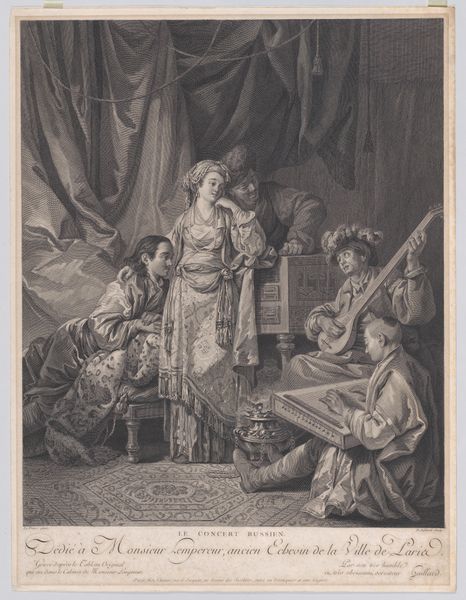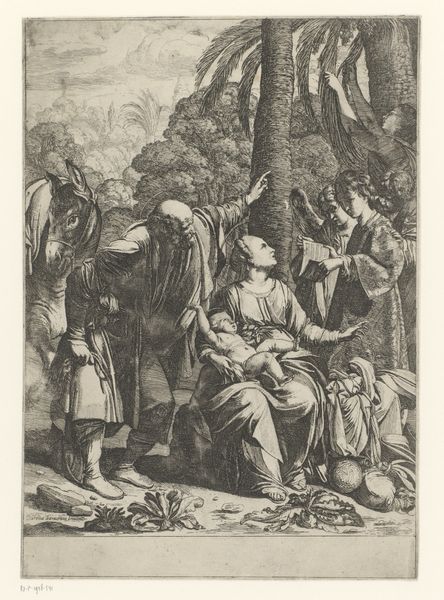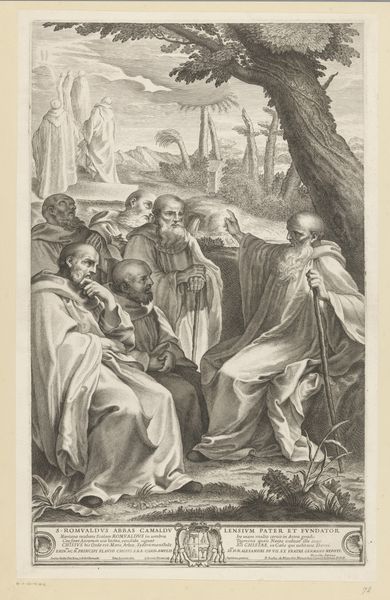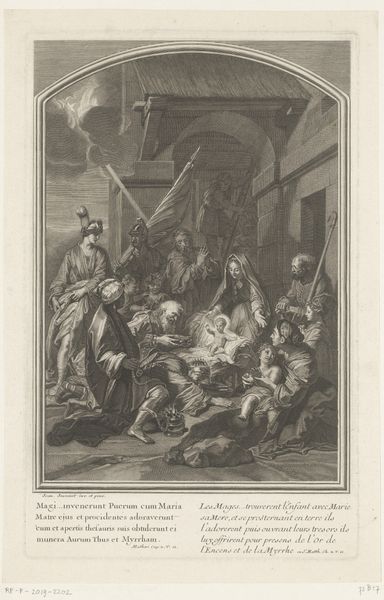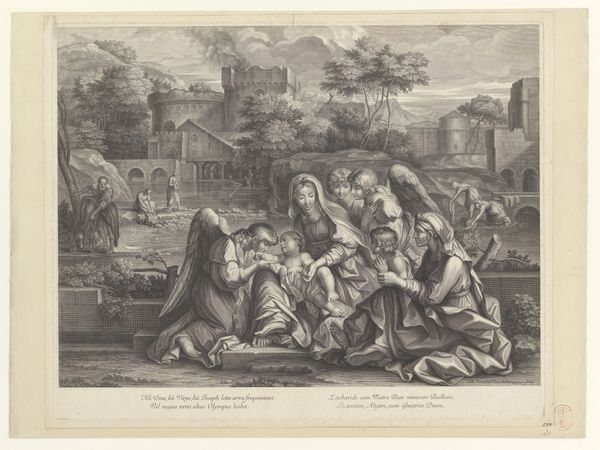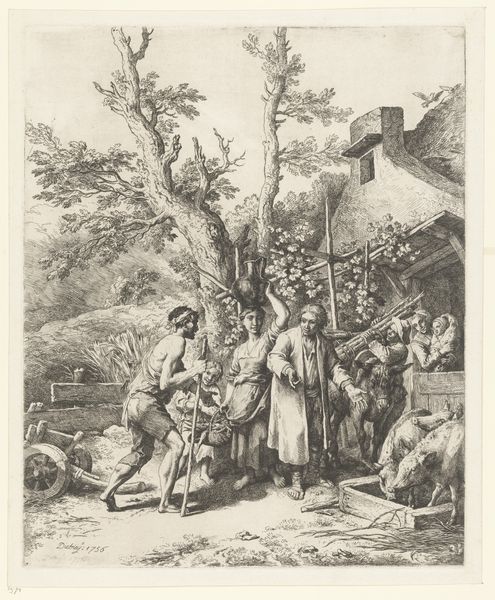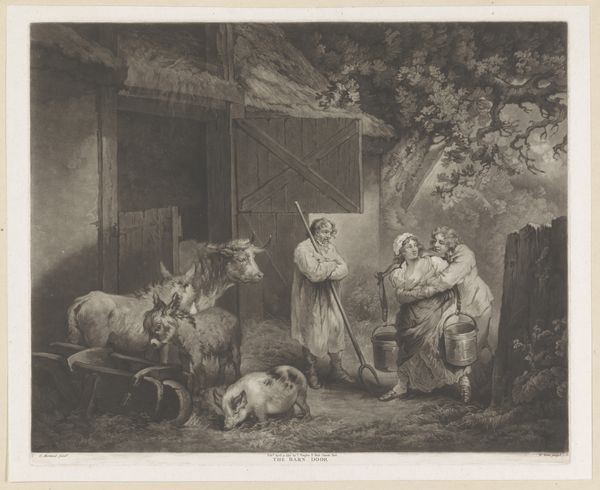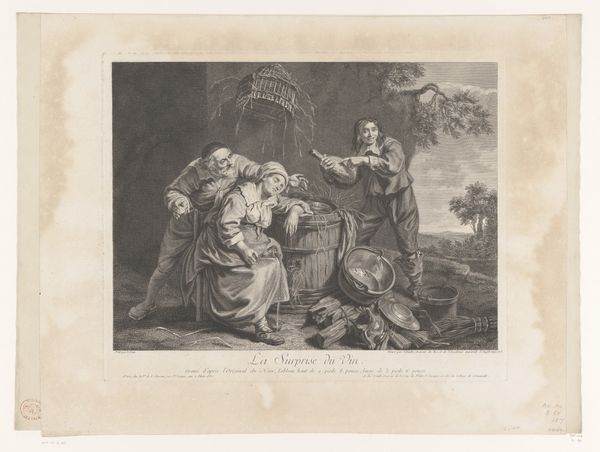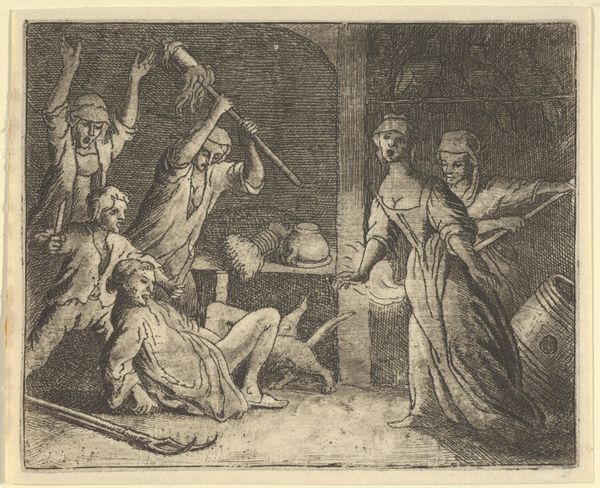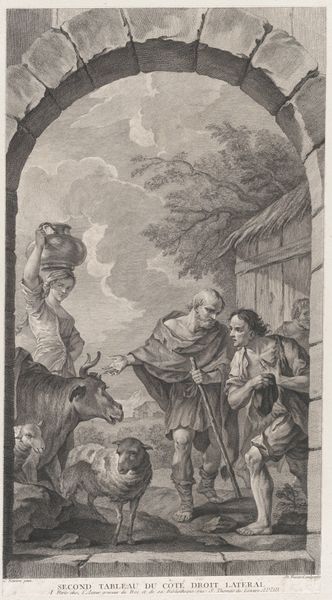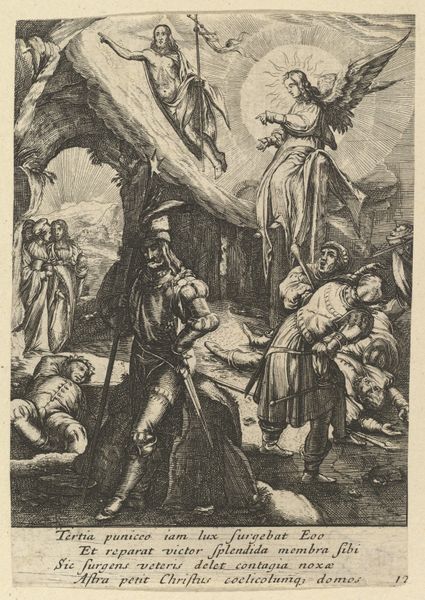
Dimensions: height 509 mm, width 361 mm
Copyright: Rijks Museum: Open Domain
Curator: We’re looking at "Groep mensen om een balalaika-speler voor een schuur," or, as the inscription on the engraving declares in French: "Le Joueur de Balalaye." It dates back to 1765, made by Benoît Louis Henriquez. Editor: My first impression is how much depth Henriquez creates using only line. The texture of the clothing and foliage are really striking. Curator: Indeed. And look at the central figure: the Balalaika player. His prominent positioning underscores the role of music and folk culture in shaping societal bonds. His performance becomes a locus around which other members of the community gather. Editor: He anchors the composition, doesn't he? The way the figures arrange themselves around him draws our eye right to the center. Tell me more about the process of creating this engraving, the labour involved... Curator: Certainly. As an engraving, the artwork required Henriquez to meticulously incise lines into a metal plate, most likely copper. Each line you see, creating both light and shadow, would have been physically etched using burins and other tools, and would have required painstaking time to produce this amount of detail. This contrasts the often-laborious life of the folk with a highly crafted representation. Editor: I'm curious about the audience for this work. Was this aimed at a more elite group, consuming an idealized representation of peasant life? It seems a rather picturesque interpretation. Curator: It likely circulated within the circles of the patron, Conseiller Rigoley de Tuvigny, to whom it is dedicated. It could have helped define social stratification while indulging in the romantic ideals of the time period, as you noted. The scene is certainly a far cry from depicting harsh rural realities. Editor: Yet Henriquez does include details that hint at something less idealized, the somewhat ragged structure behind them for instance. It complicates the visual rhetoric, even subtly. Curator: And consider the babies in a basin! There is something undeniably truthful to this everyday observation of real life juxtaposed within this staged gathering. Editor: It's fascinating how this print can hold these complexities – beauty and roughness all at once. I leave with a more nuanced sense of its visual structure. Curator: Yes, and considering the material context, it gives one a glimpse into the artist's and patron's social world. It’s about more than the depicted scene.
Comments
No comments
Be the first to comment and join the conversation on the ultimate creative platform.
